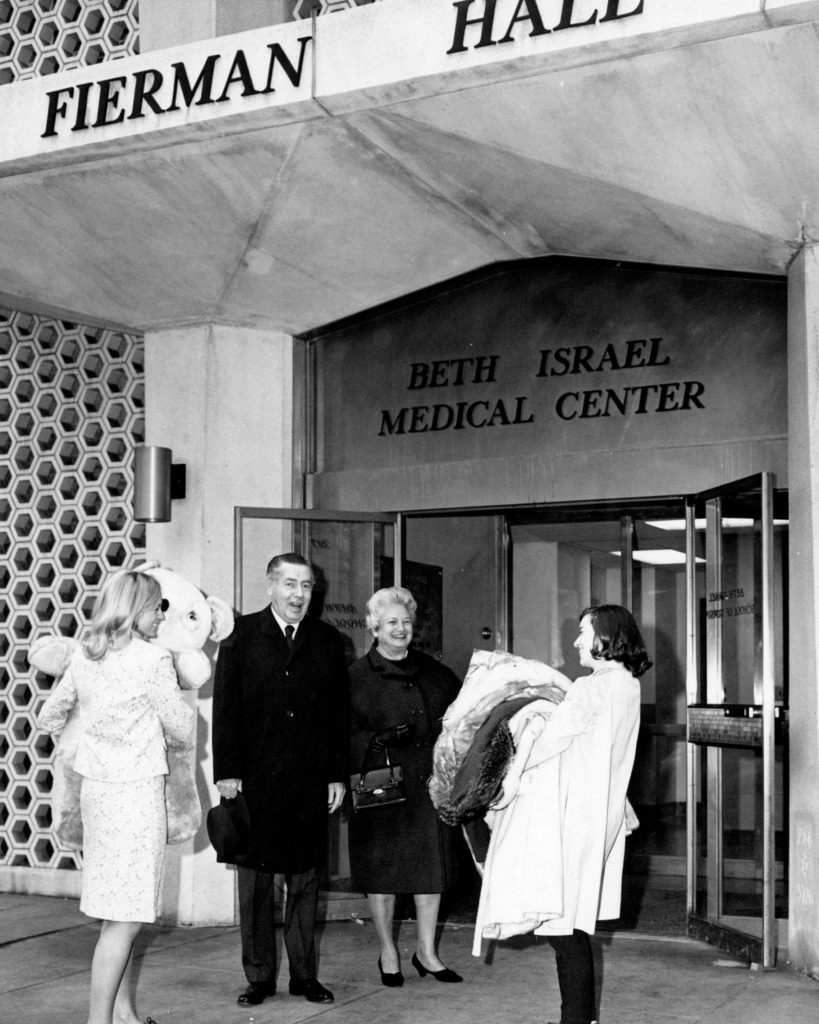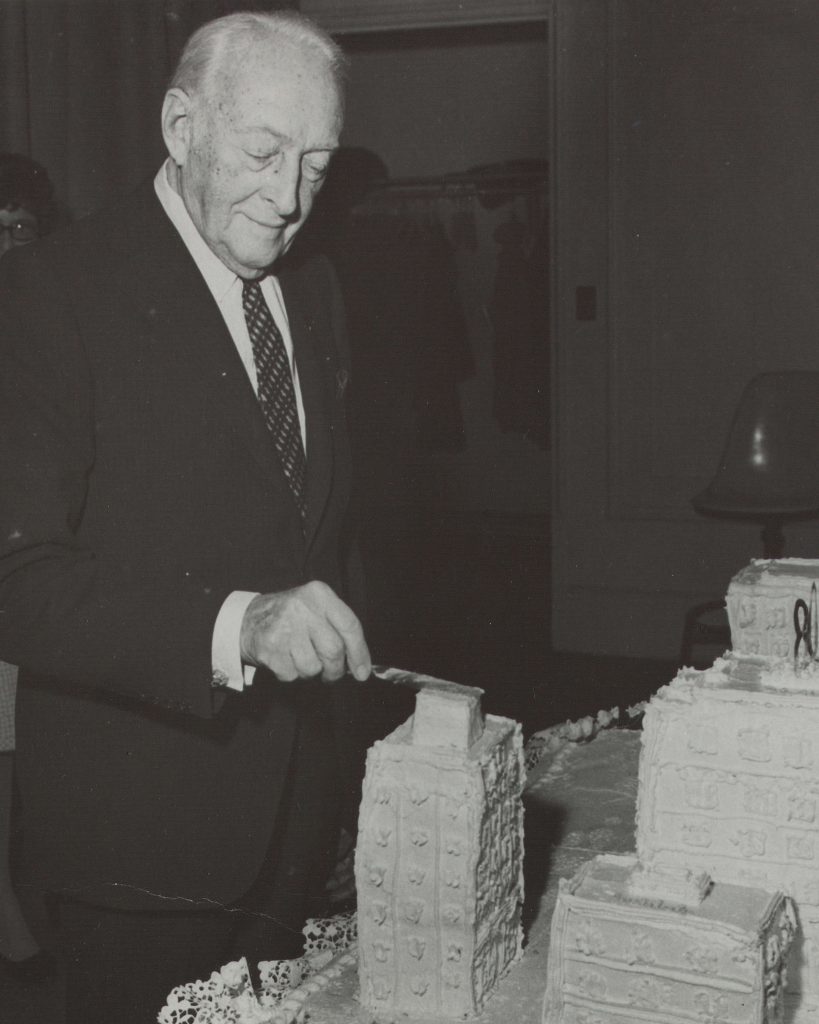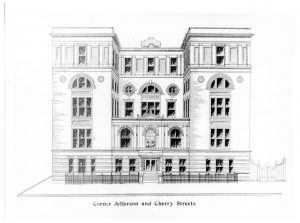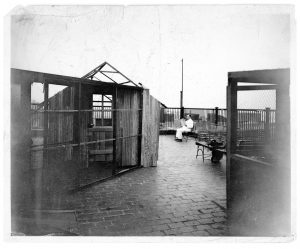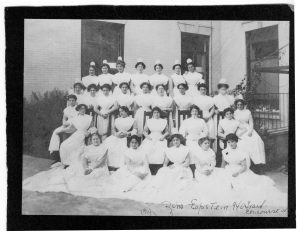Feb 6, 2024
Reflecting on Beth Israel’s rich history, we want to honor the many namesakes of the 16th Street campus. This post provides brief biographies of some of the men and women whose contributions to Beth Israel’s legacy are more than name deep.
Charles H. Silver was a career public servant, including a term as the President of the New York City Board of Education. He joined the Beth Israel Board of Trustees in 1938 and was its President starting in 1947. He was also active in Jewish-Christian interfaith matters and was a staunch supporter of the Phillips School of Nursing. A highly influential man, the Archives has photographs of Charles Silver with leaders ranging from Vice President Alben Barkley (Truman administration) to Pope John Paul to the discoverer of penicillin, Sir Alexander Fleming. In 1952, the ground was broken for the Charles H. Silver Clinic at Beth Israel Hospital, named in his honor. We have several blog posts dedicated to his legacy, and his New York Times obituary provides a more complete biography.
Fierman Hall, initially opened in 1960 as housing for Phillips School of Nursing students, is named for Harold and Minnie Fierman. Harold Fierman was a long-time Beth Israel Board member, beginning in 1954 to at least 1979. He was a corporate lawyer and served as Board of Trustees Treasurer. The Archives has a number of photographs of Harold and Minnie Fierman in our catalog.
The Linsky Pavilion is named for Belle and Jack Linsky. Belle Linsky was a Beth Israel Hospital Board of Trustees member, and her husband, Jack Linsky, was the founder of Swingline Staples. The couple was also known for their high-profile art collection, which was eventually donated to the Metropolitan Museum. The Archives catalog has a number of digitized materials about the Linsky Pavilion, which, described as an “ultramodern” and an “unusual circular building” first opened in 1966 and greatly increased Beth Israel’s number of beds.
The Karpas Pavilion, opened in 1966 as a patient care unit, was named for Irving D. Karpas. A childhood friend of Charles Silver, he was a clothing manufacturer and stockbroker. He joined the Beth Israel Hospital Board of Trustees in 1938 and remained on until his death in 1971. His New York Times obituary provides a more complete biography, and photographs of the Karpas Pavilion are online here.
Baird Hall initially opened in 1967 as “a 20-story, 144-unit staff apartment house.” It was named for David G. Baird, who was a stockbroker and philanthropist. His New York Times obituary is available here.
Finally, the 16th Street campus was named for Milton and Carroll Petrie in 1992 due to their more than $21 million in contributions to Beth Israel (according to the 1991 Annual Report) and included the largest single gift ($10 million) to Beth Israel at its time in 1986. Milton J. Petrie was a clothes retailer and Beth Israel Board of Trustees member. The Archives has digitized and undigitized materials about Petrie online here.
Authored by Stefana Breitwieser, Digital Archivist
Nov 10, 2021
The Neustadter Home was created by a provision in the 1905 will of Caroline Neustadter to serve as a convalescent center for women patients after leaving the hospital. It opened in July 1919 on the northeast corner of Central Park Avenue and McLean Avenue in Yonkers, on land once owned by Boss Tweed, leader of Tammany Hall. In 1936, an agreement was reached between The Mount Sinai Hospital and the Neustadter Home whereby Mount Sinai could send patients to the facility. Three years later, men began to be admitted as well.

The original Neustadter Home in the 1950s
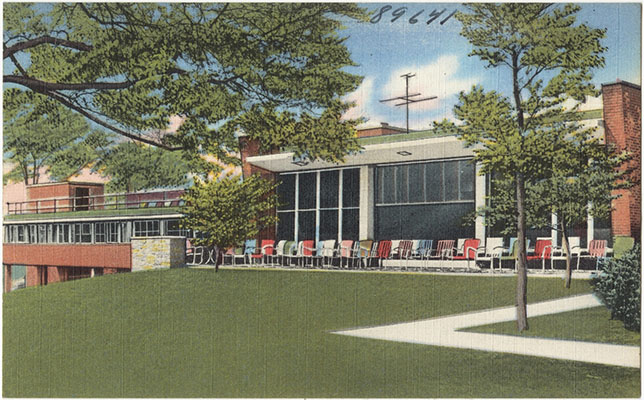
The Moses Weinman wing, opened in 1949
As hospitals saw the increasing value in freeing up beds for more acute cases by discharging patients to rehabilitation hospitals, Neustadter needed to expand. The Moses Weinman wing was added in 1949, bringing the institution up to 69 beds from the previous 56. The facility also enhanced its medical care services. To reflect this evolution, the name was changed from the Neustadter Home to the Neustadter Convalescent Center in 1954. Over the years, the patient population was composed primarily of post-surgical cases. As the 1971 Mount Sinai Annual Report on convalescent care said: “So often before we have described the true function of Neustadter as a bridge that spans illness to complete recovery.” In 1969, Mount Sinai was given preferential use of the Center and eventually the Neustadter Board members and the medical staff were affiliated with Mount Sinai.
The Convalescent Center did not have a bright future, however. In a 1959 study of Neustadter, only 24% of patients could afford the full weekly charge of $84. Money was a perennial problem. Also, because the Home was twelve miles from Mount Sinai Hospital, it was hard to provide follow-up care by physicians. In 1972, the Neustadter Board dissolved and transferred their assets to The Mount Sinai Hospital. The next year, Mount Sinai sought to sell the Convalescent Center. The sale for $1 million to a local Hebrew high school was announced in 1973, but the school struggled to make the payments. The matter sputtered along for a few years, and in 1980 the property was finally sold to a realty company. In 1983, a shopping center opened on the site, including a large Waldbaum’s grocery store. The shops remain; the Waldbaum’s is gone. The Neustadter Convalescent Center has also totally disappeared.
For information on what archival material the Aufses Archives has relating to the Neustadter Convalescent Center, click here.
Sep 28, 2021
See Building Beth Israel, Part 1: Foundations for the first part of this series. An interactive map of Beth Israel historical locations is available here. More archival material about the Jefferson and Cherry Streets location is here.
For much of the 1890s, the first decade of its existence, the location of Beth Israel Hospital was a moving target. The hospital moved from a factory loft, to an “old-fashioned parlor floor,” to two different rented hospital facilities. In its final locations during this period, split between buildings at 206 East Broadway and 195 Division Street, Beth Israel Hospital was financially solvent for the first time, enabling it to finally buy land of its own. In 1896, Beth Israel purchased a plot of land at Jefferson and Cherry Streets for the construction of a new hospital building.
In 1899, the Beth Israel Board of Directors chose a design for the new hospital. The cornerstone of the building was laid on April 1, 1900.
Much of the early funding for the new location was put up by Beth Israel’s Board of Directors, which, in addition to a mortgage, allowed for the purchase of the lot. However, the cost for the chosen design was well above initial expectations, and the final estimate was around $200,000 (about $6.5 million in 2021 dollars), requiring a significant fundraising effort.
On May 26, 1902, the new Beth Israel Hospital at Jefferson and Cherry Streets was dedicated. It included 134 beds, with male, female, and maternity wards as well as private rooms. It featured a solarium, a common feature for hospitals at that time, in addition to outdoor space on the roof for staff and patient use. The Beth Israel Hospital Training School for Nurses was founded in 1904 and moved into this building. (Today, it is the Phillips School of Nursing at Mount Sinai Beth Israel.)
By August 1912, a physiological chemistry laboratory opened at Beth Israel under the direction of Max Kahn, PhD. The laboratory was located on the top floor and could comfortably hold five people. Additionally, after extensive delays, a children’s ward opened in January 1919, but it was forced to close six months later because of the nursing shortage caused by the Influenza Epidemic of 1918. Both the children’s and maternity wards were closed and re-opened periodically, based on available financial and staff support.
As early as 1915, the Beth Israel Board of Directors began to purchase property on Livingston Place along Stuyvesant Square Park. Plans to move to this new location were delayed first by World War I, and then by the influenza epidemic. Construction began in earnest in 1922, and Beth Israel finally moved to its current location in the Dazian Pavillion in 1929, giving up the Jefferson and Cherry Streets location. While it wasn’t the Hospital’s final location, Jefferson and Cherry Streets is where Beth Israel Hospital came of age and began to resemble the hospital of today.
Authored by Stefana Breitwieser, Digital Archivist
Aug 31, 2021
The first meeting related to the founding of Beth Israel Hospital was held on December 1, 1889 at 165 East Broadway. Healthcare was greatly needed in New York’s Lower East Side, whose residents, largely recent Jewish immigrants, were affected by poverty, close living quarters, and dangerous working conditions. From a 1901 essay on early Beth Israel history:
“The origin of the idea of this institution sprang from the poor themselves. So urgent was the need for such a local hospital, that in spite of the lack of support, and even of the discouragement of those in position to assume such a task, the poor themselves, by taxing their hard earned [sic] wages, gained by the sweat of their brows, established the association and undertook to support the Hospital…It serves to demonstrate the noble Jewish heart. These workingmen when they could earn their bread and butter were willing to contribute their 25 cents a month to help their neighbors in distress.”
In the face of “meagre [sic] and uncertain support,” the founders first endeavored to begin a dispensary, rather than a full-scale hospital, and in May 1890, rented a loft in a factory on Birmingham Street. (This street no longer exists, but today would be between Henry Street and Madison Street, just underneath the Manhattan Bridge.) The building was described as “most unsuitable and the accommodations about as poor as can be imagined” but still attracted more patients than could be treated, speaking to the great need for medical care in this neighborhood at the time.

Click here for an interactive map of Beth Israel historical locations
After two months at the Birmingham Street location, the Beth Israel outpatient dispensary moved to 97 Henry Street in July 1890. Described as an “old-fashioned parlor floor,” it was “much better situated” and the dispensary remained there for ten months.
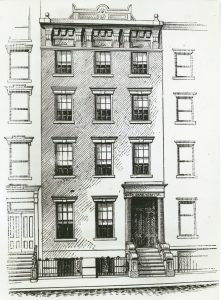
Sketch of the 206 E Broadway location of Beth Israel Hospital, circa 1892-1902.
In May 1891, Beth Israel moved to 196 East Broadway. With twenty beds, this is the first Beth Israel location to include inpatient services in addition to the outpatient dispensary. The hospital includes two house staff: Abraham Hymanson, MD, is the first House Physician, and Wolfgang Kaplan, MD is Assistant House Physician.
Embroiled in a financial crisis, Beth Israel moves again in May 1892, splitting their services across buildings at 206 East Broadway and 195 Division Street. With lower rent and more space, including thirty-four beds, Beth Israel was financially solvent for the first time. The Division Street building was renovated one floor at a time for inpatient and outpatient use.
Beth Israel Hospital remained in this location for over a decade, before moving to its location at Jefferson and Cherry Streets in 1902, and finally its current location at the Dazian Pavillion in Stuyvesant Square in 1929. The history of both of these Beth Israel Hospital locations will be addressed in future posts.
Sources:
Authored by Stefana Breitwieser, Digital Archivist
Aug 18, 2021
The Upper East Side home of The Mount Sinai Hospital and the Icahn School of Medicine at Mount Sinai spans continuously from 101st St down to 98th Street, with other buildings arrayed nearby. To achieve this continuous campus, what had once been 99th and 100th Streets between Madison and Fifth Avenues have disappeared. How and when did that happen?
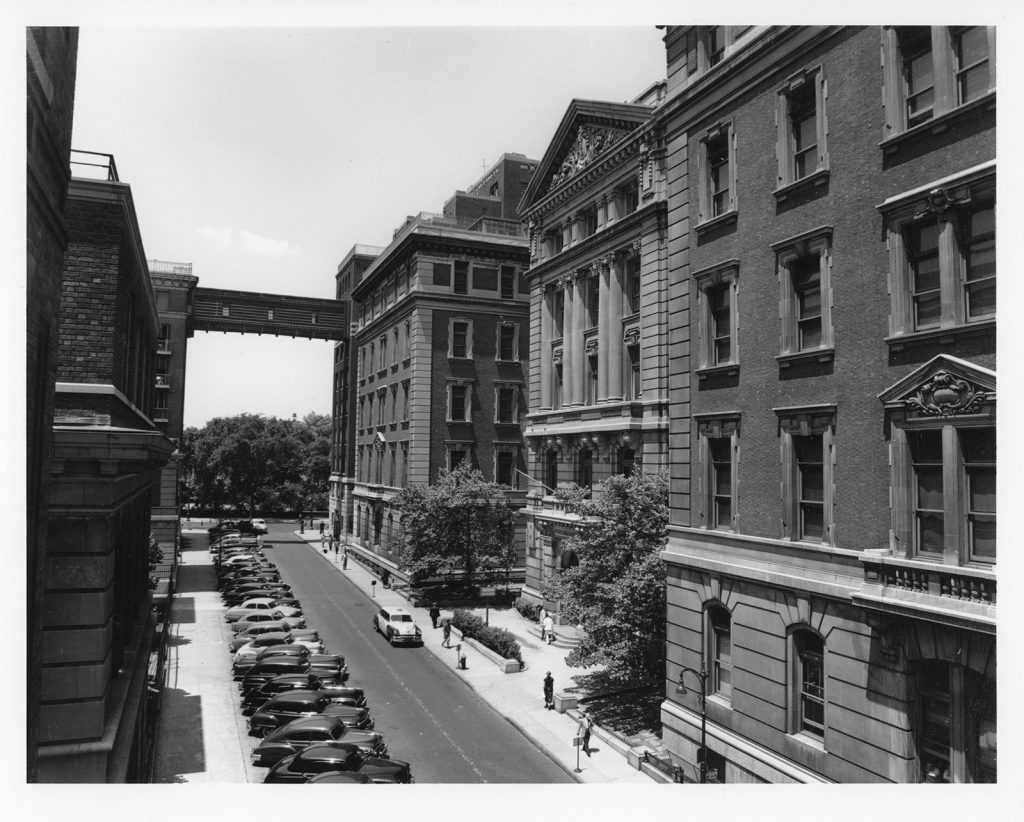
View along 100th St., around 1937
The Mount Sinai Hospital moved to 100th Street in 1904, taking up the whole block between the avenues and up to 101st Street. In 1911, the Hospital started buying lots on the south side of 100th Street in anticipation of a large expansion program. By 1921, those new buildings stretched from Fifth Avenue across but not quite to the end of 100th Street. The street was used for physician parking, and in December 1949, New York City deeded the bed of 100th Street to Mount Sinai. It continued as parking for a few more decades, but with the construction of the Guggenheim Pavilion starting in 1986, the street disappeared into a plaza between the original buildings and the new.
The story on 99th Street is very similar: Mount Sinai had expanded to having buildings spread along the northern side of the block. At the end of the 1950s, when construction of the Klingenstein Clinical Center (KCC), fronting onto the corner of Madison and 99th Street, was being planned, Mount Sinai sought the help of the City, and in August 1958, the road bed of 99th Street was deeded to Mount Sinai.
And what about the former streets? Once the construction on KCC was finished, this area became known as the Hospital Gardens, and graduation ceremonies for our School of Nursing, as well as special events were held out there. The plaza across 100th Street was covered in bricks, and a large sculpture called La Sfera Grande by Arnaldo Pomodoro was placed there in 1974. In the late 1960s, all of the buildings along the former southern side of 100th Street and the northern side of 99th Street were torn down to make way for the Annenberg Building. The Gardens became Ross Park, and today the Sfera Grande sits adjacent to the Nathan Cummings Atrium in the Guggenheim Pavilion. This is only appropriate since Mr. Cummings had originally given Mount Sinai the sculpture.

Nursing School graduation in the ‘Gardens’ in 1961. Note that KCC is being built in the back left of the image.
